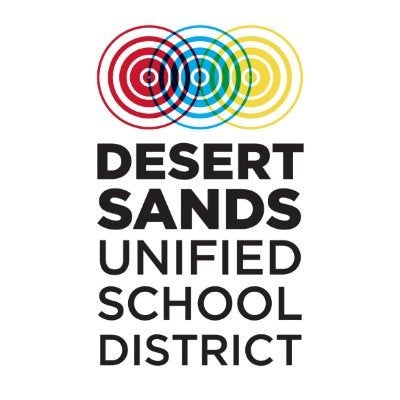
Breakfast Spotlight: Feeding Coachella Valley Kids With Breakfast In The Classroom
How Coachella Valley’s Desert Sands Unified School District is tackling childhood hunger.
School breakfast has a profound impact on the kids who eat it. During National School Breakfast Week, we are taking a moment to spotlight the most important meal of the day, while celebrating school breakfast programs and the dedicated Hunger Heroes who serve school meals day in and day out.
Studies show that school breakfast can change lives. Eating a school breakfast can reduce chronic absenteeism by as much as 6 percent and improve a student’s focus and success in reading and math.
But don’t take it from us, take it from Daniel Cappello, director of nutrition services and his team at Desert Sands Unified School District (DSUSD), who initiated the Breakfast in the Classroom (BIC) program in his schools.

Where is Coachella Valley?
Coachella Valley is more than the music festivals that take place in the region. DSUSD serves children and families, primarily rural, Latino, and migrant, with many families working in the agricultural, hospitality, warehouse and landscaping industries, across nine cities that comprises the Coachella Valley. Taking into consideration the needs of their community and the impacts of food insecurity, this Riverside County district partnered with No Kid Hungry to pilot BIC programs to close the hunger gap in their schools.
What is Breakfast After the Bell (BAB)?
There are three Breakfast After the Bell models that schools can adopt to ensure kids eat breakfast and start their school day ready to learn. Whether it is Breakfast in the Classroom, Second Chance Breakfast, or Grab-n-Go to the Classroom, these models each allow students who missed breakfast in the morning to have a nutritious meal to eat with their peers.
What does Breakfast in the Classroom look like at Desert Sands Unified School District?
The day starts with school cafeteria staff preparing cooler bags filled with an entree, fruit, juice, and milk. Think of a small carton of milk or orange juice, an apple or banana, and a granola bar, cereal or muffin – at DSUSD, they have mini conchas!
After cooler bags are prepared, either school staff or students have the task of picking up the bags and bringing them to their classroom. Assigned as a role to one or two students, this provides a sense of responsibility and leadership.
What happens next depends on the teacher. Some teachers have the bags right at the door, allowing students to grab the required breakfast items as they head to their desks. Other teachers dismiss by tables or groups.
As students eat their breakfast at their desks, teachers can take attendance, listen to morning announcements, or homeroom time activities. Media, silent reading, or social emotional learning activities are a few popular ways to spend breakfast time.
Hear what some DSUSD students and teachers have to say about the new program:
“We get a bunch of delicious food. We get pan dulce and these cocoa bars, which are good too.” – Kennedy Elementary 4th grader
“I think with breakfast. I feel like there’s more concentration afterwards, and there’s also less wiggling. Just to get that burst of energy first thing in the morning. Helps them concentrate.” – Kennedy Elementary teacher
“Breakfast in the Classroom is a program that makes certain every student in the school eats breakfast. It’s a student run program for the most part. So the kids are serving it. The kids are cleaning up after themselves. It’s really neat.” – Daniel Cappello, director of nutrition services
See more of Kennedy Elementary’s BIC program as featured by NBC Palm Springs (4 min video)
“National data shows that many of the students that do qualify for free and reduced price school meals can vary from different school districts. But it can be as low as 15%. For many, especially those who are food insecure. Breakfast, especially school breakfast, is the most reliable meal that they’ll get throughout the day. And now, with this BIC program at Kennedy Elementary (Indio, CA), we went from 45% of kids eating breakfast to 97%. We have been so fortunate to have partners like DSUSD, from nutrition services, educators, principals, and custodial staff. Many different partners came together, thank you for allowing No Kid Hungry to be part of this amazing team,” said Andrea Cuellar, senior program manager with No Kid Hungry.
Ways You Can Help
While ALL students in California eat school breakfast and lunch at no cost, barriers persist. Issues beyond their control, such as unstable housing, unreliable transportation, lack of access to health care, or stigma, continue to force students to not eat breakfast. A hungry student can lead to chronic absenteeism (missing 15 days or more school days for any reason), difficulty learning, as well as increased behavioral and health problems.
You can ensure kids have the nutrition they need to thrive in and out of the classroom and reach their full potential in a variety of ways:
- Donate. $1 can help provide 10 meals* for kids. Your support will help us fund meal programs all over the country and help us advocate for policies that will help kids get the meals they need.” *Donations help support programs that feed kids; No Kid Hungry does not provide individual meals. Learn more at NoKidHungry.org/OneDollar
- Speak up for kids. Reach out to your elected officials and ask them to do more to end childhood hunger. Tell your lawmaker to advocate for policies that will help kids get the meals they need.
Last update: March 14, 2025